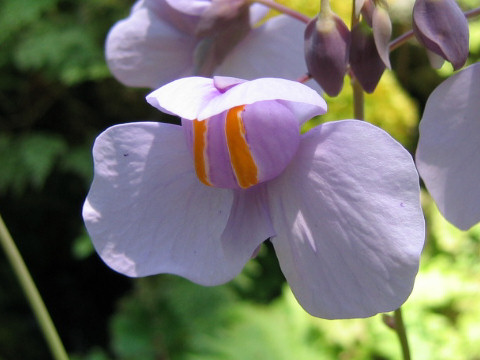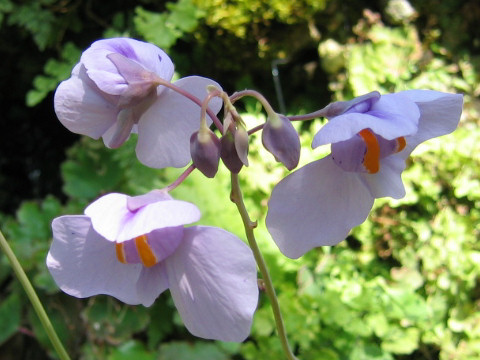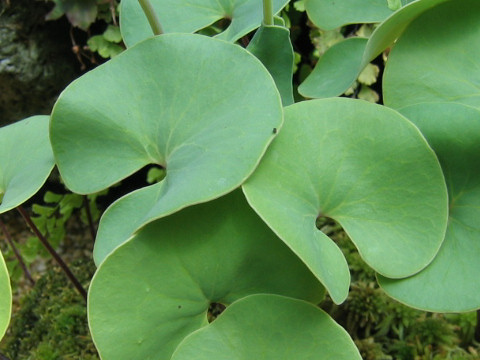 |






|

|
南アメリカに分布しています。標高750〜2500メートルの高山の湿った草原や岩場に生えます。食虫植物で、地中に白い地下茎をのばし、ところどころに小さな捕虫嚢をつけます。葉は大きな腎形です。春と秋に、長い花茎を伸ばして、「みみかきぐさ」を大きくしたような藤色の花を咲かせます。花冠の真ん中のオレンジ色の縦縞が目立ちます。種小名は、ラテン語で「腎臓(reni)」+「形(formis)」に因みます。
|

|
タヌキモ科タヌキモ属の多年草で、学名は Utricularia reniformis。英名はありません。
|

|
he Utricularia reniformis belongs to Lentibulariaceae (the Bladderwort family). It is a perennial herb that is distributed in South America. It grows in moist alpine meadows and rocky areas at altitudes between 750 and 2500 m. It is an insectivorous plant with a white underground stem with small insect sacs attached to it. The leaves are large and kidney-shaped. In spring and fall, it grows long flower stalks and produces mauve flowers that look like a larger version of the "mimikaki-gusa". The orange vertical stripe in the center of the corolla is conspicuous. The specific epithet is derived from the Latin words "reni" (kidney) + "formis" (form).
|

|
大阪市鶴見区「咲くやこの花館」にて、2005年05月26日撮影。
|




